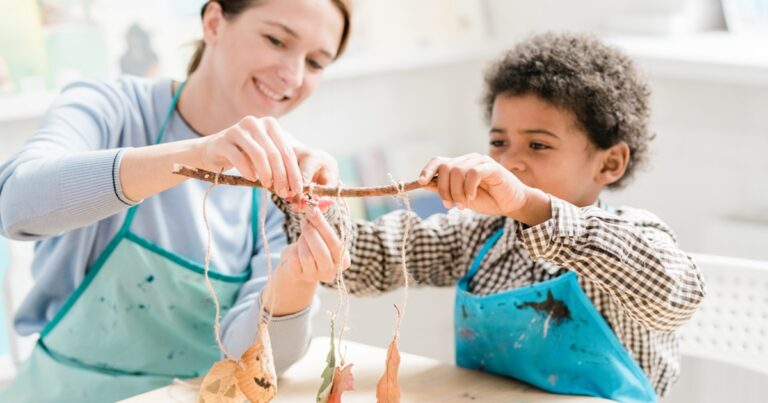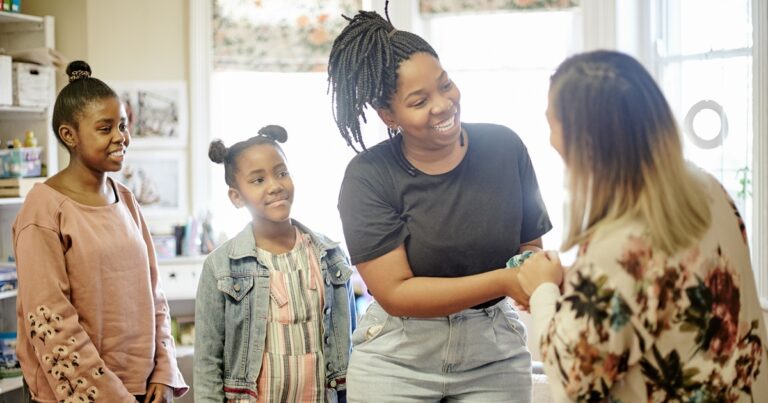23.9K
As summer break draws to a close, many teachers find themselves wondering: “What should I do during the first week of school?” While it can be tempting to dive right into academics on day one — especially in middle and high school when there is so much material to cover for the year — those first few days offer a unique opportunity for teachers to set the tone and culture of their classroom. This itinerary can serve as a rough outline to help you set the foundation for a successful and productive year ahead.
Day 1: Get to know each other
If you’re trying to cultivate a culture in your classroom where student engagement and collaboration are strong, establishing relationships and rapport is essential. The first building block of that foundation, of course, is getting to know each other.
Before you ask students to tell you all about themselves, be sure to introduce yourself first! Most of your students are probably as eager to get to know you and what kind of teacher you are as you are to get to know them. Spend the top of the class sharing about yourself and how you operate. After that, you can move on to a structured getting-to-know-you activity.
Generally, the go-to activity for getting to know students is icebreakers, but there are also plenty of other ways you accomplish this. A tried-and-true technique includes a student inventory or a getting-to-know-you questionnaire. By asking a variety of questions — academic or personal — you can learn how to best support your new students. This also provides students with an outlet to reveal information to you that they might prefer not to reveal in front of their classmates. Some examples of questions you can ask include:
- What do you like the most/least about school?
- What are your strengths/weaknesses in this subject area?
- What are three words that describe you?
- What are some of your passions/interests outside of school?
- What are your goals after graduation?
- What can I do to help you be successful in this class?
- Who do you live with at home?
As you read through these over the next several days, you’ll be able to get a sense of who your students are and what they might need from you throughout the year.
If you’d prefer to get students moving around and interacting with each other a little bit more during the first day of school, you can set up back-to-school stations that are geared toward getting to know your students. A couple of ideas for station themes:
Day 2: Review the syllabus
On the first day of school, students are often readjusting after a long summer break, which isn’t the best for absorbing new information. With introductions and first-day jitters out of the way, you can now move on to reviewing the syllabus together. For students who are still finalizing their schedules, it can be helpful for them to know what they will learn, so they can make informed decisions about their courses for the year.
One strategy for getting your students to engage with the syllabus in a meaningful way is to do a syllabus scavenger hunt. This type of activity can introduce students to the course, help them learn about important rules (such as the late work policy), and foster student collaboration.
Additionally, if you have any policies that you’d like to go more in-depth about (such as plagiarism or lab safety), or if you need to have students set up any type of account or devices, this is the day to tackle that.

Editable Syllabus Template and Syllabus Scavenger Hunt
By The Sassy Math Teacher
Grades: 6th-8th
Use the template to create a syllabus for your class. Then, have them work together to complete a scavenger hunt around the classroom to make sure they actually read the syllabus and know what to expect from your course.

Syllabus Interactive Google Slides (and Scavenger Hunt Activity)
By Social Studies Toolbox
Grades: 7th-12th
This resource covers the main components of a middle or high school syllabus. In addition, there’s a scavenger hunt activity at the end of the syllabus, ensuring students both read and understand the syllabus.
Day 3: Establish classroom norms
On day three, it’s time for one of the most important elements of the first week: establishing your classroom norms. One way to help your students feel connected to their new classroom community is to establish norms together. For middle and high school students, allowing them the opportunity to play a part in creating classroom norms will not only help them feel valued and heard but also make it easier for you, the teacher, to get their buy-in.
For co-creating classroom norms, you can have students either brainstorm norms individually or work together in small groups. Then, you can come together as a class to decide on the final list of norms that will guide everyone for the school year. (Remember: If you find that these norms need tweaking or resetting at any point in the school year, don’t hesitate to do so!)
Day 4: Give a pre-assessment
Toward the end of the first week, as you prepare to begin instructions, it’s helpful to get a sense of where your students are in their learning. Use this day for activities that will allow you to gauge their skills and prior knowledge on the subjects they’ll be learning about in your class. Pre-assessments can also help you understand your new students’ learning styles, and they give students a sneak peek (and a feel for) at what they’ll be learning about in the coming weeks. The best part is that these pre-assessments don’t have to be formal or big. Simple activities like writing assignments, quizzes, circle-ups, and group discussions can reveal a lot.
Day 5: Review content
It’s the last day of the first week — you’ve made it! Based on the pre-assessment results, you can review any concepts that might need a little refresher. For some good old-fashioned Friday fun before getting down to business, you can try doing an escape room to review content and end your first week with a little pizzazz!

Back to School Activity – Editable Escape Room Volume 2 for Any Subject Area
By Nouvelle ELA
Grades: 7th-10th
Bring a buzz of excitement to your classroom with an escape room! This resource can be used for any subject. Simply plug in your content or subject-specific information, save as a PDF, and go!
Prepare for the first days with TPT
Teachers often say that the most important things to focus on during the first week are getting to know each other, establishing norms, and gauging prior knowledge. Of course, there’s no perfect formula for a first week, but if this sounds like the way you’re hoping your first week will go, you can find even more middle and high school activities for the first week of school on TPT.













